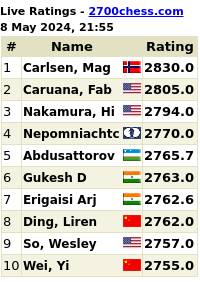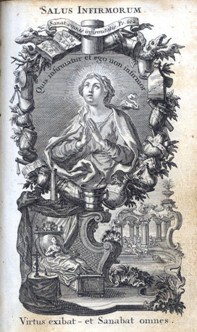 Today is the anniversary of the Apostolic Constitution Quo primum of St. Pius V, by which – following on the workd of the Council of Trent – the saintly Pope promulgated the Missale Romanum in 1570.
Today is the anniversary of the Apostolic Constitution Quo primum of St. Pius V, by which – following on the workd of the Council of Trent – the saintly Pope promulgated the Missale Romanum in 1570.
Quo primum set the West on a new course.
I have some posts about Quo primum. For example:
Thanks to Pope Benedict XVI we once again have the unquestioned freedom to use the Missale Romanum, which remained mostly unchanged from the time it was promulgated in 1570.
Here is the oldie podcast, for your convenience.
Podcast: Play in new window | Download
Subscribe: RSS


































Personally, I prefer the older liturgical forms. But, to be honest, the chief purpose
of QUO PRIMUM was the unity of worship in the Roman Church and SUMMORUM PONTIFICUM
defeats this purpose.
[brhenry says: Personally, I prefer the older liturgical forms. But, to be honest, the chief purpose
of QUO PRIMUM was the unity of worship in the Roman Church and SUMMORUM PONTIFICUM
defeats this purpose.]
brhenry, that was not the only purpose of Quo Primum. It was also to get rid of abuses that had crept in in certain areas and certain additions certain people felt at liberty to add to the Mass here and there, etc. Oh wait! This sounds like what Benedict wanted to do to “help” the New Order! Of course, abuses have not disappeared now given that the current Supreme Pontiff does not seem too interested in the Liturgy, and given that many Bishops and Priests have taken that as a green light to suppress the Latin Mass here and there and not continue to insist on a better “ars celebrandi” of the New Order, but Summorum Pontificum did help and continues to help in that regard, just like Quo Primum did in its days.
Summorum Pontificum was also about giving to the immemorial celebration of the Mass (as done up to 1960) the legitimate place that it always had, and to remind people that they too had a legitimate right to that celebration of Mass.
”. . . the Missale Romanum, which remained mostly unchanged from the time it was promulgated in 1570.”
Indeed, virtually unchanged for even longer than that. According to a footnote (with reference) on page 67 of Lauren Pristas, The Collects of the Roman Missals ,
“Further, the Missale Romanum of 1570 ‘hardly differs at all’ from the missal that was produced at Milan almost a hundred years earlier, in 1474, and, except for the addition of some new saints, the 1474 Milanese missal reproduces the missal used in the papal chapel at the end of the thirteenth century.”
The point being not merely that the missal of 1570 had been in use in Rome for at least a couple of centuries when Pius V promulgated it for general use throughout the Latin rite, in order to stem the tide of liturgical deviations that were then proliferating along with the protestant revolution, rather like the new Eucharistic prayers that were sprouting in the revolution of the 1960s. But rather that liberals exhibit ignorance (or worse) when—in response to criticism of the missal of 1970 as having been “fabricated” by a committee—they respond that so was the missal of 1570. It was not.
Abuses are not cured by division, which only exasperates the situation. Liturgical discipline through enforcement of the GIRM (Say the Black and Do the Red) maintains the principle of unity.
Discipline is the solution, not division.
I’ve wondered about the relationship between the invention of moveable type printing and the standardization of the Missal under “Quo Primum”. Anyone read any articles on this theme?
Father,
If I may, since I commented before. I have read the document again. It is not long and it is exceedingly clear and precise.
It is sad that it took the intervention of Benedict to make it clear that the Tridentine Mass is the Mass of the Catholic Church and that no other Pope ever has had or ever will have the authority to displace it.
The Content and intent of the document are clear. The object was the preservation of the pure liturgy of the Mass according to the instruction of Trent. It is to apply to all provinces of the Christian world, with a 200 years exception, or, and this is important, if less than 200 years, then only after the particular clearance specified.
Minor changes, psalms are mentioned as typical, can be made if “enjoined by Us”.
It does not say that alternative Rites cannot be allowed, the Ordinariate Rite and presumably the Pauline Rite could be examples, but in no way can they displace the Tridentine Rite as that of norm of the Catholic Church.
“Abuses are not cured by division, which only exasperates the situation. Liturgical discipline through enforcement of the GIRM (Say the Black and Do the Red) maintains the principle of unity.
Discipline is the solution, not division.”
That division existed from the beginning of the NO, then, because it is clear that the OF was never abbrogated. Pope Benedict did not cause a division. He, merely, pointed out the reality. Moreover, Saying the Black and Doing the Red maintains a principle of unity for that particular liturgical action, but it does not imply a unity with history. For instance, the Dominican Rite Mass has its own unity, but it is not the unity of the NO, per se, but its own internal unity. Likewise, the NO has its own internal unity when everyone says it the same, but that does not imply a universal unity with the totality of Catholic practice throughout the ages, or, rather, it does not imply a strong unity, merely a weak one, since all valid Masses have at least a weak unity in Catholic history. The EF Mass has a much stronger claim to a strong unity with history.
The Chicken
Pope Saint Pius V did a great job in Quo primum for the Mass. He did a questionable job in Quod a nobis for the Office.
If “Quo primum” had been meant to standardize all worship to a single pattern, there wouldn’t have been any Dominican Masses or Ambrosian Rite or any of that stuff.
It was meant to standardize worship by people using the Latin Rite Roman Missal, and not involved in any other Rite or Use.
The point of Quo primum was not “unity” in the sense of uniformity, but to eradicate a state of disorder.